We all know that texting is dangerous (especially when driving). And we have been told that texting (and “sexting”) can be very dangerous for tweens and teens. In fact, we probably have been bombarded by stats and case studies and examples to the point of where we, as parents, all simply start ignoring or tuning it all out. We really shouldn’t, you know, because so much communication happens between tweens and teens via smart phones now. And as good parents, you really should be involved, or at least “have a clue” as to what is going on in your child’s digital life. And while there are many types of apps and services now available for parents to block access to certain contacts, prevent texting at certain times and simply see smart phone activity, I believe that being overly restrictive can actually be counter-productive when it comes to the digital life of kids. But these software tools and services ARE beneficial. Here’s why.
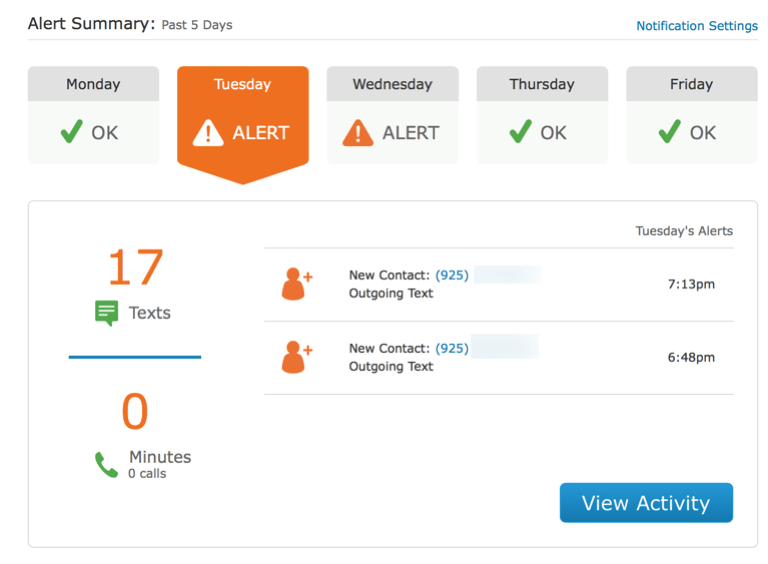
Let me preface everything by saying whatever you choose to do regarding your child’s smartphone and online activities is your prerogative. It depends on you as a person, your values and your beliefs. It also depends on your child, their personality, and their strengths or weaknesses. If blocking apps, numbers or activities works for you, then that is the strategy you should use. All of the recommendations in this article are my thoughts and opinions and what works for me, my wife and my family, might not work for yours or even be appropriate. But I do have one overall recommendation, having a dialog with your child or children about online safety and messaging is a good place to start. A dialog is 2-way and you need to listen as part of the process. Otherwise it becomes a lecture and trust me, kids tune out lectures completely. Save your words if you are going to do that.
It has taken me two long paragraphs to actually get to what I want to write about, namely a service and application provided by AT&T called “Smart Limits.” First, so that you know, I’m not going to dive into too many of the details about what Smart Limits does. The AT&T Smart Limits website does a pretty good job at that. I will show a few things from my account as examples. But really I want to talk about what I learned from using the Smart Limits service, essentially discovery through monitoring and protection.
A Quick Overview of AT&T Smart Limits
I did want to show a little bit about the AT&T Smart Limits program as it was core to the discovery process. You can sign up for free for 30 days (a trial). After that, you are billed for $4.99/month for one line being monitored or $9.99/month for up to 10 lines. You can cancel at any time so I would recommend doing the free trial initially.
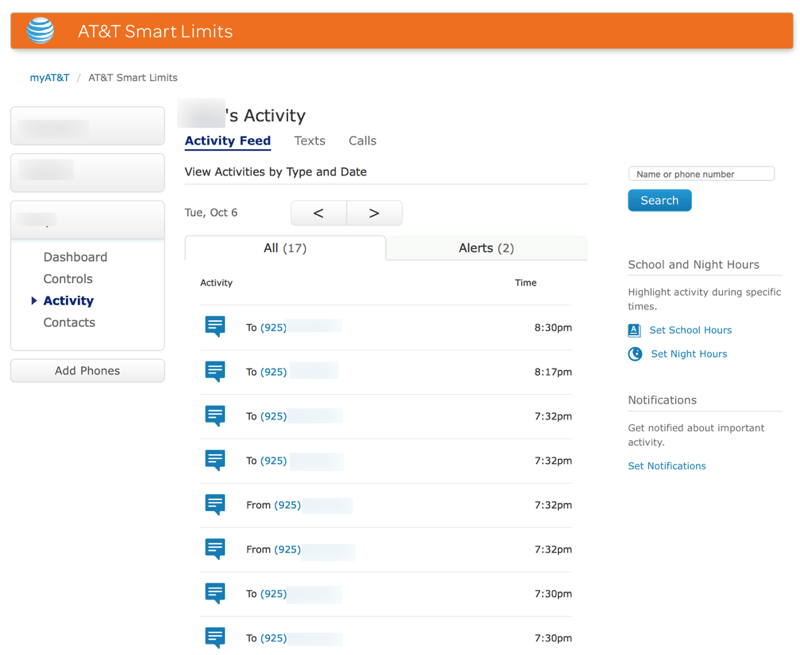
What can you do with it? A lot of pretty good core restrictions:
- Limit phone use – you can set up time of day and day of week restrictions for texting, phone calls or other activities
- Block numbers – you can block particular phone numbers from calling or texting (can’t block iMessage however)
- Turn off cellular data – while you can do this within other AT&T mobile apps, you can also do it within the Smart Limits app
- Set up Schedules – you can set up time restrictions (e.g., school, night or at all times) to limit texts, outgoing calls and cellular data
- Whitelist number – you can set up a list of numbers that can call or text at any time (e.g., parents)
Do note: WiFi connectivity does make things a bit more complicated as you cannot control usage when your child is using your WiFi or other people’s WiFi. It’s sort of a catch-22 as you want to have limits or restrictions potentially, but you don’t want to go into data overages so you need to have WiFi enabled. Even with those “loopholes” though, when your child is out and about away from your hopefully watchful eye, you do get quite good insights into their activities (and can restrict them if you so choose).
Here are a few screenshots of the service in action.
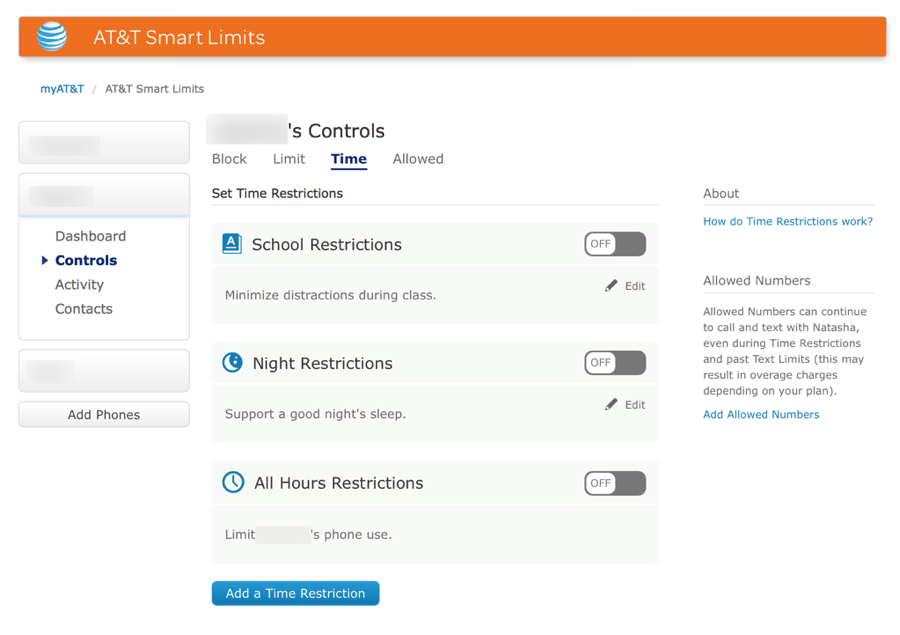
Above, you can see how various time restrictions can be set up. Some are pre-set (but customizable) like School time restrictions.
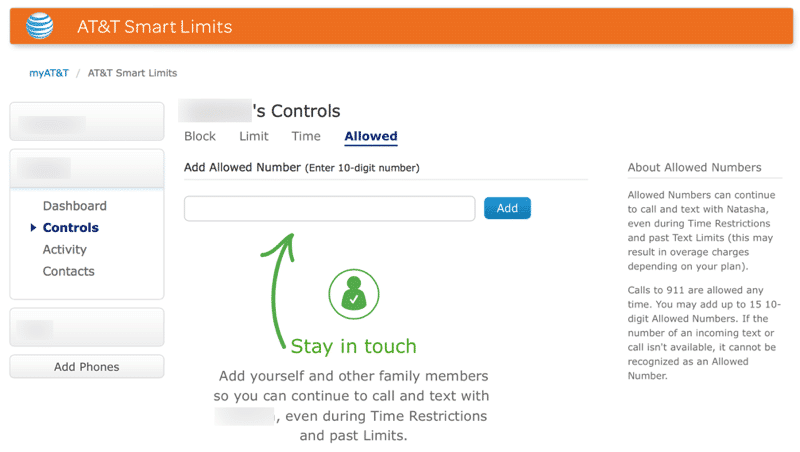
If you are a parent or guardian, be sure to add your number to the “Allowed” list.
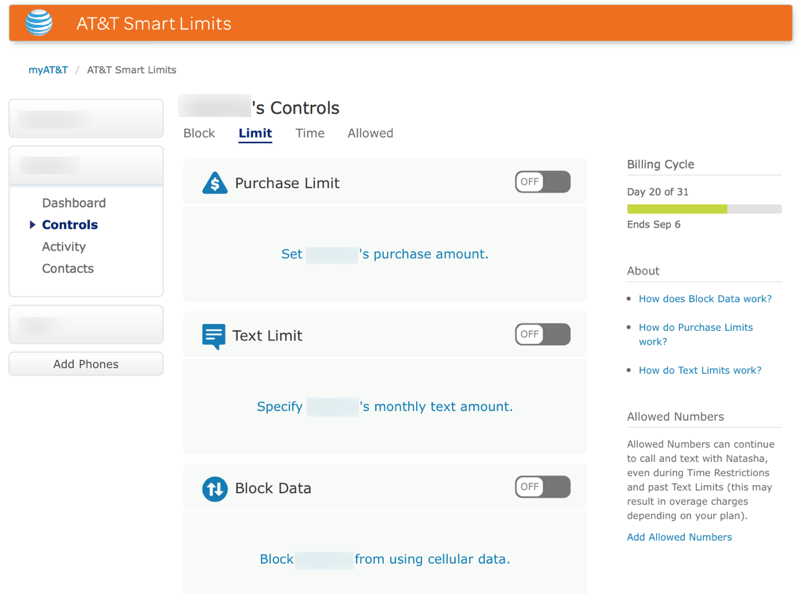
Here you can set limits on purchases, the number of texts or data usage.
There is one more feature which I didn’t put into the “restriction” list above. That is Activity Monitoring.
Monitoring Activity with AT&T Smart Limits to Gain Insights
While as parents, we often have to impose restrictions and limits, another core responsibility of ours is observing and monitoring our kids’ activities. We do this to understand them better and decide when and where to become more or less involved in the parenting of our kids. While the word “restriction” has somewhat of a negative connotation, “monitoring” and “observing” seem to be more about learning, which is my mind is a bit more positive in nature.
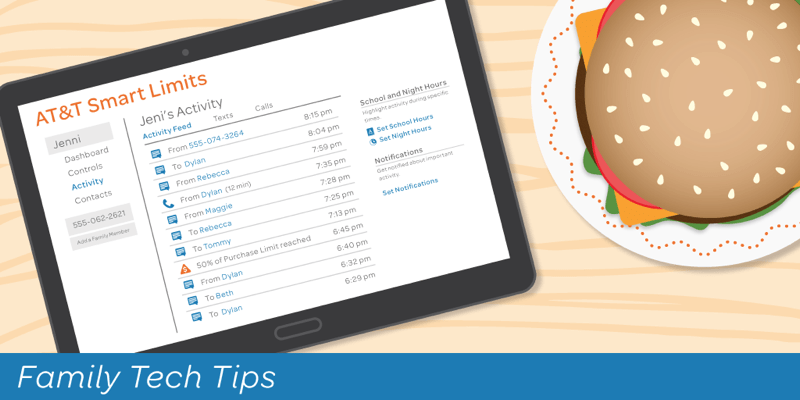
That is where I feel the AT&T Smart Limits service really provides the most “positive” value.
The important thing to remember that when you look at the Activity within the Smart Limits app, you are not seeing everything. As I mentioned, the service is more accurate when the phone being monitored is NOT on WiFi and is NOT using 3rd party voice and/or messaging apps. It CAN track cellular data usage and regular text phone calls. But once your kid diverges from that path, you can only really get insights or trends about your child’s cell phone usage when they are not on WiFi. If you really want to get granular or the restriction, here are a few of them:
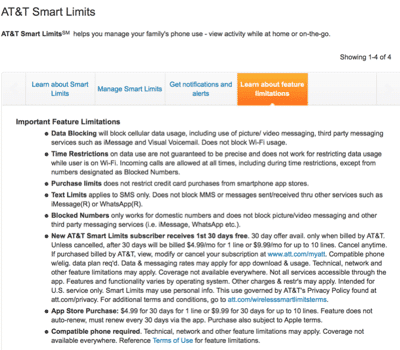
But that’s ok.
Here’s why.
As a parent you want to learn about your child in order to have more educated discussions with them. What the AT&T Smart Limits app provides is a means to have that discussion. For example, I noticed that my youngest daughter had texted a strange number, one that didn’t really look like a US phone number. It turns out, after I asked her about the number, she explained that she was connecting with one of her best friends who lives in Japan and who only visits in the summer. She keeps in touch over the school year via texting, video calling and other messaging.
Another one of my daughters had some texts with a phone number that had a neighboring area code. Together we punched the number into her phone to see what came up in the address book. It turns out it was a parent who was asking if she could baby sit.
I asked about some other numbers that were active either with calls or texts and my kids told me who they were and what they were doing. I wasn’t hiding the fact that I knew who and when they were texting or calling. It was out in the open. And they were sharing with me. And talking about it. We were having a conversation. Nothing was being hidden. Or restricted.
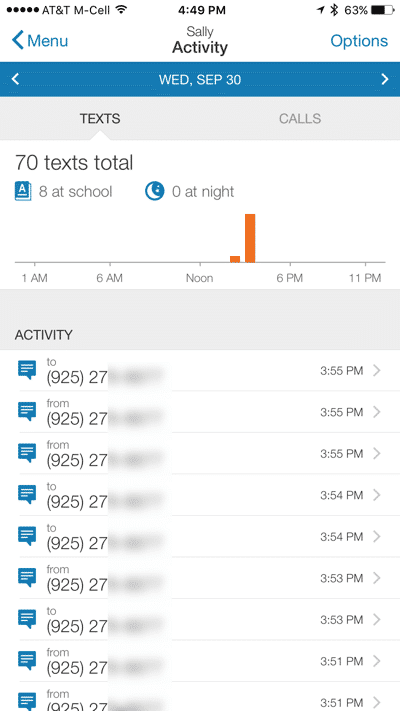
If you make it a “research and discovery” activity, it’s much less accusatorial or negative. It’s about open dialog. And you can casually get more information – “hey, I noticed that you were texting so-and-so a lot last night, were you working on homework or just catching up?” or “I saw you were texting a bit during school, did your teacher allow you to do that?” or just “who is that number you keep calling, is that a new friend?” While you may get a one-word response or a cold stare, sometimes if done at the right time, you might have a conversation with your child that is open.
It is important to know what your kids are doing on their phones, especially when they are younger. With AT&T Smart Limits you can do this, passively. Use the numbers you observe and the time and patterns of texting and calling to start a conversation with your child about online and texting safety.
Disclosure Text : This is a sponsored post and I have received compensation as well as the AT&T Smart Limits service to trial for a couple of months in order to prepare to write it as well as write it. All opinions within this article, unless otherwise noted, are my own and are not subject to the editorial review from any 3rd party. More information can be found in my About page.
HTD says: Using a service like AT&T’s Smart Limits enables you to gain new insights into your child’s smart phone activity allowing you to have conversations about safe smartphone usage.


1 comment
Sheryl
This thing is completely useless if there’s Wifi access.